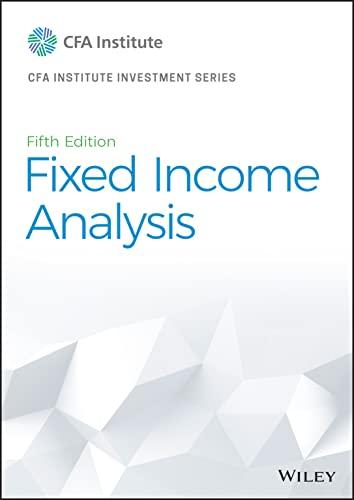An asset manager is asked to build and manage a portfolio of fixed-income bonds to retire multiple
Question:
An asset manager is asked to build and manage a portfolio of fixed-income bonds to retire multiple corporate debt liabilities. The debt liabilities have a market value of GBP 50,652,108, a modified duration of 7.15, and a BPV of GBP 36,216.
The asset manager buys a portfolio of British government bonds having a market value of GBP 64,271,055, a modified duration of 3.75, and a BPV of GBP 24,102. The initial surplus of GBP 13,618,947 and the negative duration gap of GBP 12,114 are intentional. The surplus allows the manager to pursue a contingent immunization strategy to retire the debt at, hopefully, a lower cost than a more conservative duration- matching approach. The duration gap requires the manager to buy, or go long, interest rate futures contracts to close the gap. The manager can choose to over-hedge or under-hedge, however, depending on market circumstances.
The futures contract that the manager buys is based on 10-year gilts having a par value of GBP 100,000. It is estimated to have a BPV of GBP 98.2533 per contract. Currently, the asset manager has purchased, or gone long, 160 contracts. Which statement best describes the asset manager’s hedging strategy and the held view on future 10-year gilt interest rates? The asset manager is:
A. Over-hedging because the rate view is that 10-year yields will be rising.
B. Over-hedging because the rate view is that 10-year yields will be falling.
C. Under-hedging because the rate view is that 10-year yields will be rising.
D. Under-hedging because the rate view is that 10-year yields will be falling.
Step by Step Answer:






